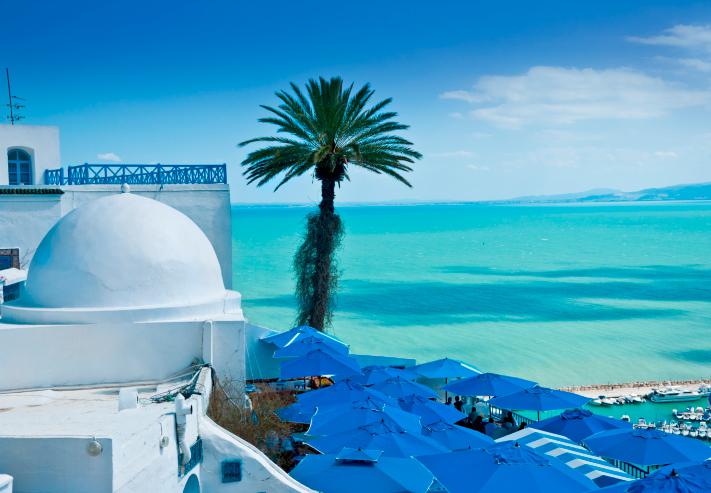Sidi Bou Said, in Tunisia

A blue summer? Nothing like traveling to Sidi Bou Said to get it. In this coastal town in Tunisia, just twenty kilometers from the capital, you will be able to smurf like nowhere else, with the permission of the Moroccan Chaouen.

The feeling of entering an artistic universe is brutal and above all by the sea. And they say that the blame for this harmony in white and blue belonged to a baron, Rodolphe d’Erlanger, who built his own Alhambra next to the cliff (everything is very much in the Arab-Andalusian style) and filled it with muses.
The coolest summer place.

The same thing happens to this Mediterranean corner that looks at Sicily from Africa as it does to the Cinque Terre, there in the Ligurian Sea, leaving Genoa on the way to Livorno.
That it could not be more beautiful or raise more passions. There are not many towns that climb a watchtower to look out over a bay and also like this one.
Musicians, painters and writers from all over the world have fallen at his feet and ended up having tea on one of its wonderful terraces.
Preserved as is.
What is exciting about Sidi Bou Said, in addition to the name and its location, an orographic filigree, is the way in which it has leaped on modernity and has remained faithful to those guidelines set by Baron d’Erlanger at the beginning of the 20th century, who put everything on his side, by decree, so that this Tunisian paradise would always be the same.

Labyrinthine cobbled alleys, immaculate white facades, doors, windows, Moorish lattices and blue railings, and hidden gardens and shady courtyards. A dream.
Those mythical cafes…
Above all, the Café des Nattes, which was once a mosque, accessed by a proverbial staircase and where people like Simone de Beauvoir or Paul Klee were present.

His thing is to sit on his carpets, like Aladdin but without flying (or who knows) and indulge in pine nut tea with pasta. To enter, you will have to cross its blue threshold.
It is unique but not the only one.

Sidi Bou Said was baptized like this in the 19th century by the Sufi mystic named after him who inhabited it in the 13th century. Until the 19th century it was Diebel el Manar. In other words, the mountain of the lighthouse.
The crafts you were looking for.
If you went crazy at the bazaar in Istanbul or the one in Marrakech, prepare to succumb to Tunisian crafts that are sold to the highest bidder in this souk. Fabrics, leather goods, ceramics, silver objects.

They coexist with works of art that animate galleries and antiques.
You will probably end up sooner or later at the Center for Arab and Mediterranean Music, the Ennejma Ezzahra palace, which was the house and Olympus of the baron and is a jewel of Tunisian architecture.
Other things to see.
Beyond the fascinating museum of the Bardo, the kingdom of mosaics and other archaeological treasures, in the capital Tunis, and the ruins of the old Carthage on the top of the hill, next to the new, which is a luxury residence, there is Gammarth, a high-flying tourist area, and La Marsa, a seaside resort with a white sand beach that is home to the Safsaf Café, which stands around a public well from which water is still drawn by means of a Ferris wheel that drives a camel that goes round and round.
Eat with a view.
In Dar Zarrouk you can pay homage while you measure the bay. It is at the top and offers a half-Mediterranean, half-Tunisian cuisine. Fresh fish and couscous.